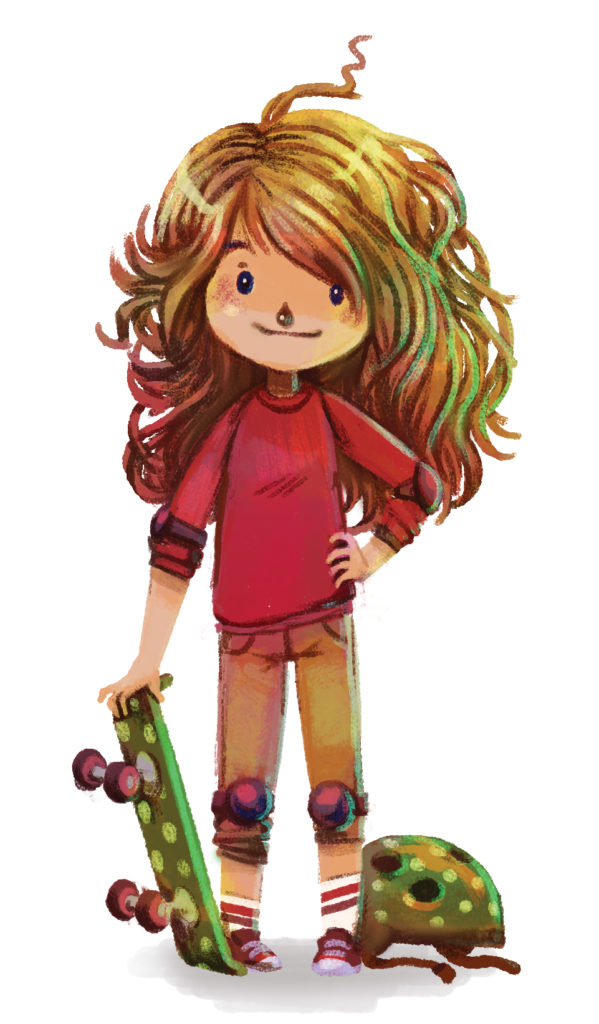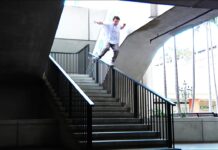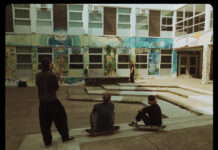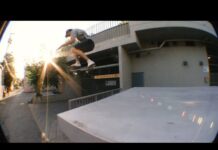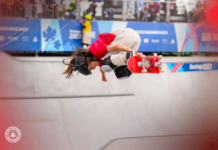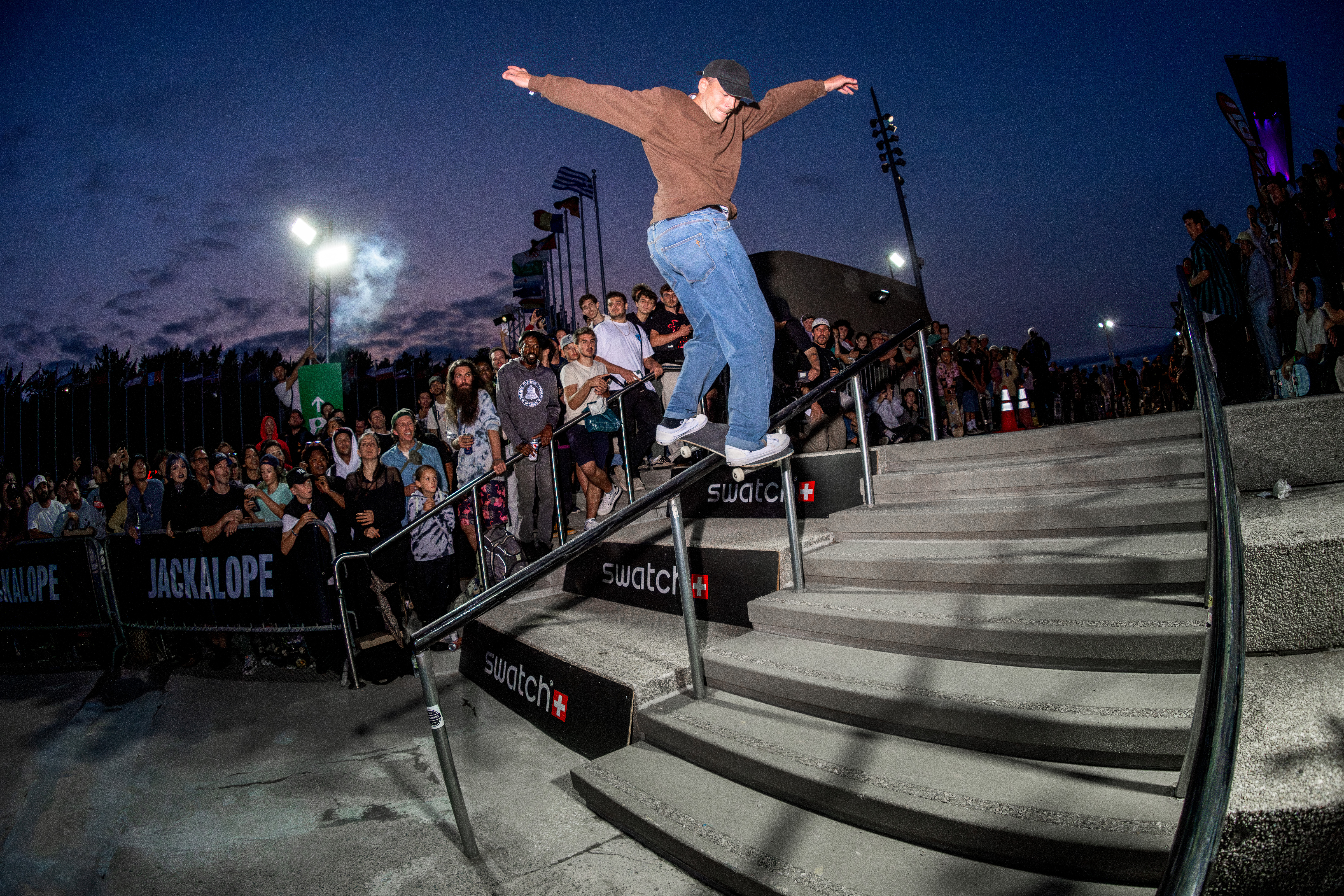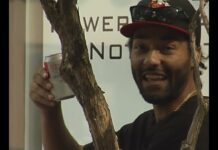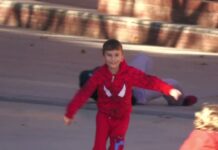Clare O’Connor and I sat down virtually to discuss her new book Skateboard Sibby before Zoom shares had skyrocketed. It was Friday March 13th when we spoke, which Clare pointed out was cool, and in turn made me wonder if I was superstitious. I had come to our interview excited; background research completed and armed with questions. When Dan (SBC Skate editor) first proposed I interview the author of a middle-grade novel about Sibby, an eleven-year-old skateboarder, I wondered what about skateboarding could be translated into a novel? I don’t read many novels, let alone middle-grade ones, but regardless I was intrigued and jumped on the opportunity. Clare and I spoke for almost an hour about skateboarding, empathy, bullying, compassion, active lifestyles and much more. Below is an interpretation of the semi-structured interview I conducted with Clare O’Connor, author of Skateboard Sibby, published by Second Story Press.

When I read novels, I always wonder how much of the author’s lived experience imbues their characters and plotline. When I read anything about skateboarding, I always question the author’s inclusion and contribution to skateboarding. Clare O’Connor started skateboarding around the age of 7 on her dead-end street in Truro, Nova-Scotia. There weren’t skateparks back then, Clare informs me, but neighborhood kids would meet up in schoolyards. It was in one of these schoolyards that Freddie, the antagonist in Sibby’s story, was incarnated. Clare was told by a neighborhood boy that she didn’t belong on a skateboard because of her gender. In no time, Clare got on her orange fibre glass skateboard and showed future Freddie she belonged. After that day, they formed a friendship that transcended gender, based on their mutual love for skateboarding. Clare O’Connor draws from her beginnings in skateboarding to tell the story of perseverance and resilience.

While most of the skateboarding in the novel takes place within the town skatepark, I was interested to find out what Clare thought about street skating. Clare, who earned a Master of Urban and Rural Planning degree, highlights the importance of creating an active community through urban planning and architecture. She recounts for me the bliss she felt sitting on a bench, in a city square in France, enjoying the view and sounds of local people, diverse in ages, skateboarding, riding scooters, and rollerblading. And so, while most of Sibby’s adventures in skateboarding take place within the skatepark, it’s simply emblematic of the important role the skatepark plays in Sibby’s community. In this space, Sibby can tell the kid who snakes her not to. She can point out everyone else is waiting their turn, while also reminding that sometimes people snake unintentionally. Every time Sibby interacts with the skatepark she’s building self-confidence, which is an important representation. As Clare notes, self-confidence tends to wean in girls at that age. Clare really wanted girls to be able to read about a character who says, “Hey no, you can’t butt in front of me like that.”
During our FaceTime, I asked Clare about the many life lessons that can be gleaned from this compact, easily accessible book. Skateboarding, as a sport and lifestyle, transcends chronological understandings of age, as does this book. As an adult reading this middle-grade novel I could understand the lessons interwoven throughout. We see Sibby receive wisdom filled advice from her grand-parents in matching track suits. We see her be self-reflexive of her own reactions in the face of change, discomfort, and frustration. The author was intentional, and as a result the novel reminds us that both children and adults deal with bullying, “we all experience the same thing regardless of age.”
Representation was carefully considered; as a girl, Sibby is a minority at the skatepark, but her experience isn’t written through a victim narrative. Rather, Skateboard Sibby exemplifies the possibilities of learning self-confidence through skateboarding. At the skatepark, Sibby learns to take her space, to speak up for herself, and to extend compassion, empathy and understanding even to the biggest school bully, Freddie. Clare O’Connor focuses on the similarities of all skateboarders to promote, through her book, the comradery and resilience that develops within the skateboarding community.
“I think the nuances to who, what people are all about are just so much more complicated than slotting people easily. I wanted to contribute to what I hope will be a growing body of literature about how it doesn’t have to be that. I don’t know who Sibby is going to be, but I wanted the book to be about the fact that, at this stage, she’s just who she is, and let’s accept her for whatever that is, as opposed to trying to label her.”
Skateboard Sibby is a great book for all youth, and I would argue a refreshing read for adults as well. I’m grateful for a generation that gets to read books like the one Clare O’Connor wrote. Everyone can use a little reminder from Sibby’s grandmother, Nan, that “there’s always a way forward, even if sometimes it feels like you’re going backward in order to get there.”
